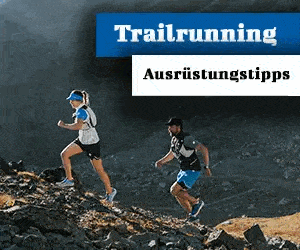We've already introduced you to some climbing exercises that fall into the category of plyometrics training. But what is plyometric training anyway? Why is it so effective? This is explained to us by Christoph Völker of target10.
A contribution by Christoph Völker of target10a
Plyometric training is a special strength training and is used for example in athletics. It refers to counter movements that change immediately from an eccentric phase into a concentric phase. In this case, as with a spring, tension is built up, which can be discharged explosively by the stretch reflex of the muscles.
Reflex mechanism provides the necessary explosive power
Classic exercise examples from athletics are box jumps or two-legged hurdles (not to be confused with hurdles!). If you jump down a box, you jump down on both legs from a box that is 75 cm high, for example, and then jump back on top of this box as quickly as possible when it comes into contact with the ground. A kind of reflex mechanism in the muscles helps you to jump up explosively like a rubber ball. More explosive than jumping straight off the ground without jumping. This "explosive-reactive strength training" can even be a lot of fun thanks to the natural reflex!
The theory and the benefits of plyometric training
As already indicated, in plyometric training it is like tensing a spring and then releasing it in order to develop a tremendous development of power development. This force development is so great because two different forces are added together:
- The dissolution of the preload in the muscles
- The concentric contraction
The release of the tension in the muscles happens faster than a concentric contraction alone and therefore accelerates it. Electromyographic measurements showed that the increase in performance does not come about through more muscle strength, but through the stretch reflex of the muscles and neuromuscular coordination. The hope in plyometric training is to optimize this stretch reflex and the associated neuromuscular coordination.
In addition to speed, plyometric training also improves the following aspects:
- maximum strength
- Intramuscular coordination
- reaction time
- Flexibility of muscles, tendons and ligaments
- Partial strength endurance
The benefit for climbing and bouldering
When it comes to climbing and bouldering, it is interesting for dynamic trains. If you want to work on its explosiveness, you should give plyometric training a chance. Climbing and bouldering is primarily about the upper body and arm muscles. The finger muscles in my opinion but also affected.
Plyometric climbing exercises
Transferred to climbing, there are plyometric exercises especially on the campus board and the pegboard. But also on the chin-up bar, on the boulder wall and bouldering itself plyometric exercises or trains can be found. Here some examples:
1 Pull Through
2 Double Dyno Loaded
3 Muscle Up
4 Flying Knees
You can find all sorts of articles for your personal training www.target10a.com.
Credits: Cover picture Roger Schäli, Text Christoph Völker von target10.com


